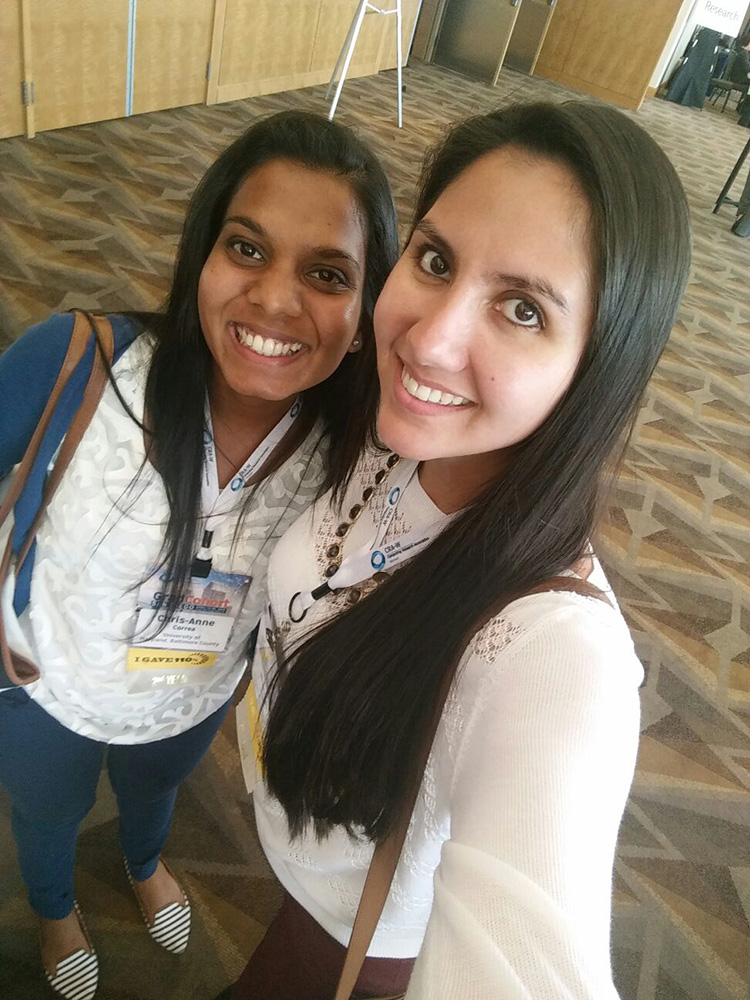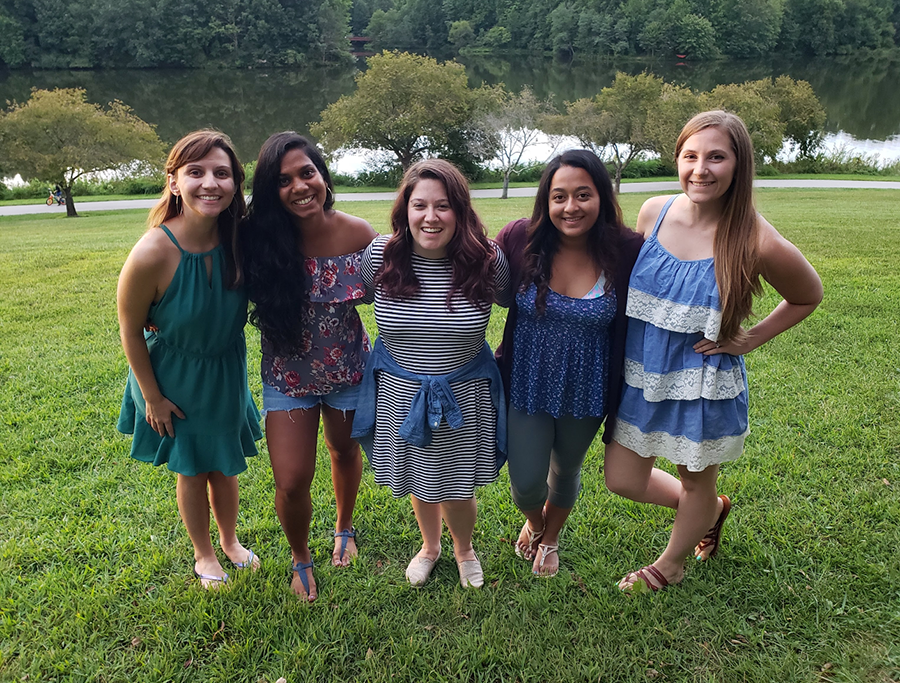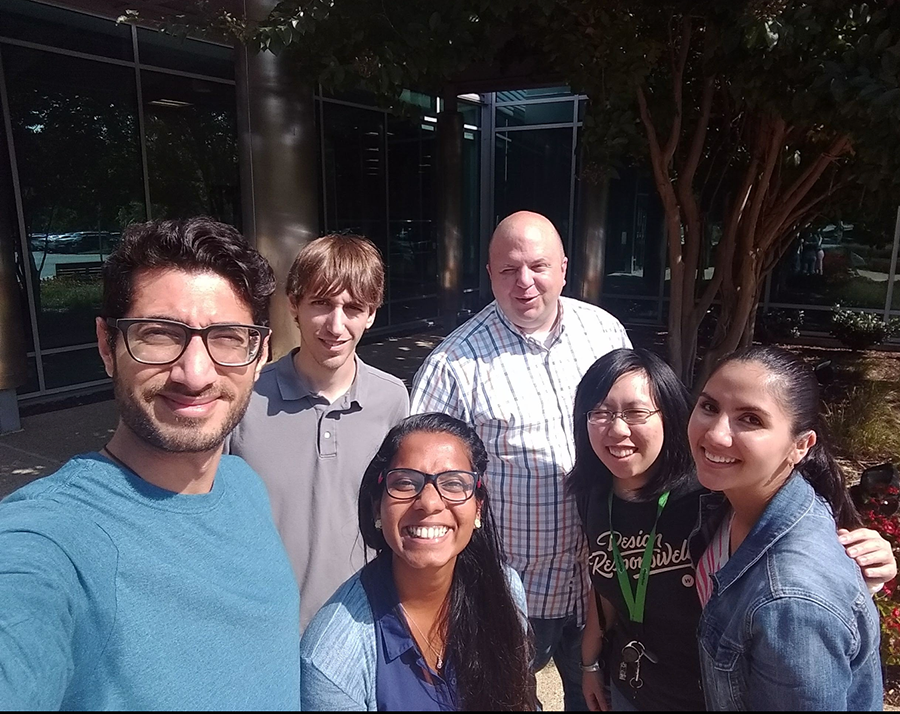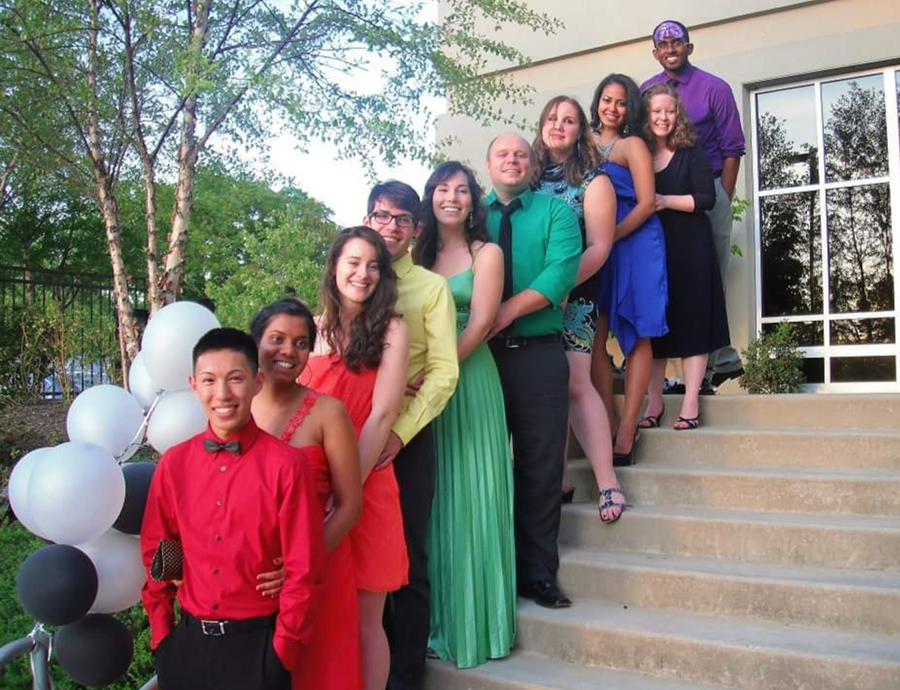Chris-Anne’s dedication to human-centered design and accessibility has been a hallmark of her professional journey. Currently, a Senior User Experience Designer at Amazon Prime Video, she enjoys collaborating closely with cross-functional product teams to shape the end-to-end user experience of digital products to be intuitive and delightful. She focuses on creating experiences using customer input and measures impact every step of the way to iteratively improve the product. She has led the user experience design for companies including John’s Hopkins, NASA, Exelon Corporation, Stanley Black & Decker, and more.
With both graduate and undergraduate degrees from UMBC, BS in Statistical Neuropsychology (created through the Interdisciplinary Studies program) and MS in Human-Centered Computing, she brings strong user-research skills and innovative thinking to nurture a product from concept to completion and thereafter. She’s very passionate about making products accessible and has made it her mission to empower her community to design inclusively. Chris-Anne also guest lectures at UMBC for graduate and undergraduate classes on the topic of inclusive design and accessibility best practices.
She takes time to share her experiences as a student, why UMBC is so important to her, and offers advice for those interested in pursuing UX Design as a career.
Information Systems: You received your BS in Statistical Neuropsychology, a degree that you created on your own through the Interdisciplinary Studies program. What in your undergrad experience prompted you to pursue this unique educational path?
Chris-Anne Correa: I love learning and was interested in combining my passion for multiple subjects into something more meaningful. I learned that UMBC offered an Interdisciplinary Studies program where I could work with multiple advisors to create my own major so I did just that and created a degree called Statistical Neuropsychology.
Information Systems: What led you to transition to Human-Centered Computing for your graduate degree? And was it important for you to stay at UMBC?
Chris-Anne Correa: Statistical Neuropsychology lends itself beautifully to Human-Centered Computing – both degrees focus on people, building empathy, understanding how different people think, what motivates them, and the decisions they make. The statistics in my undergraduate program helped with the research aspect in my graduate program. I’ve also always been passionate about design and art. After I graduated from UMBC with my bachelors degree, I didn’t find a job right away. During this interim period, I started working part-time as a technology specialist for the IT department at UMBC.
My best friend came across the Masters program in Human-Centered Computing at UMBC and sent it to me because she felt it was very much aligned with my interests and aptitude (Thanks Natalie!). I sat in on a few Human-Centered Computing classes to understand if this program would be a good match for me. The subject matter of the classes immediately drew me in and the professors were kind and knowledgeable, they encouraged my curiosity. To further reinforce my desire to pursue this program, my manager at UMBC offered to change my part-time job into a graduate assistantship after he saw my keen interest in the field. That’s how I transitioned to Human-Centered Computing at UMBC for my graduate degree and this field has truly been my calling.
Information Systems: What are some of your fondest memories as a student at UMBC?
Chris-Anne Correa: My fondest memories are with the life-long friends I made at UMBC and my time as a Resident Assistant. I came to UMBC as an international student from India at the age of 17. With being so far away from my family, I was nervous whether I would make any friends who would accept me for me. The people I met at UMBC surpassed my expectations and have become my second family. We are still very bonded and deeply involved in each other’s lives and families, especially my college roommates. My UMBC family is some of the best people I know. Dining hall dinners, resident assistant training, library study sessions, game nights, hallway pranks, and sleepovers – the list goes on and on. By far my best memories have been at UMBC.
Information Systems: As someone who is very passionate about inclusive design and accessibility best practices, did you find this passion for this work during graduate school?
Chris-Anne Correa: I found my passion for inclusive design during the interim period between my undergraduate and graduate programs when I was working as a technology specialist at UMBC’s IT department. One of my assignments was to assist a professor from the Biology Department with using clickers to take quizzes as well as multiple choice exams within the classroom setting. Until then clickers were used for attendance and daily quizzes, they weren’t used for exams. While I was assisting this professor, I noticed that there was a student with a visual impairment and the clickers were not fully accessible to them. This prompted me to observe the students’ needs and to redesign the clicker. I proposed a more inclusive solution to the clicker company so that students with all abilities could use classroom technology equitably. This initiative also led my manager to convert my part-time job into a graduate assistantship so I could further pursue my passion in inclusive design via the Masters in Human-Centered Computing program.
Information Systems: You are currently a Senior User Experience (UX) Designer at Amazon Prime Video, can you tell us what your role entails and what a typical day looks like?
Chris-Anne Correa: As a Senior User Experience (UX) Designer at Amazon Prime Video, my role involves crafting intuitive and engaging experiences for users across various platforms such as web, mobile, and living room devices. Here’s a glimpse of some of my tasks on a day-to-day basis:
- Understanding User Needs: Reviewing user research findings, such as user interviews, surveys, and analytics data. This helps me gain insights into user behaviors, preferences, and pain points, which in turn informs my design decisions. I work on projects that launch at a global scale, so understanding our global audience needs from the get-go is important. Ex: localization of text in different languages and how it is presented in the user interface.
- Collaboration and Ideation: I often host or participate in brainstorming sessions and design critiques with cross-functional teams, including product managers, engineers, content strategists, and other designers. We collaborate to generate ideas, solve problems, and ensure that our designs align with user needs and business goals.
- UX Strategy: When designing a new feature or redesigning an existing feature, it’s important to consider the strategy of how the new or redesigned piece will fit in the larger ecosystem of the product. I create user personas and customer journeys to visualize the end-to-end impact. I also establish design principles that serve as a framework for creating consistent and cohesive user experiences and prevent dark design patterns that could harm users.
- Wireframing and Prototyping: I create mockups and prototypes to visualize and iterate on design concepts. These prototypes allow us to test interactions and gather feedback from users and stakeholders early in the design process.
- Visual Design and Branding: Once the wireframes are finalized, I refine the visual design elements and work closely with our visual design and motion team to finalize typography, color palettes, iconography, motion and imagery. I ensure that the designs adhere to the brand guidelines while also creating a visually appealing and cohesive user experience.
- Accessibility and Inclusive Design: Given my passion in accessibility and inclusivity, I also dedicate time to ensuring that our designs are accessible to users with disabilities. This involves following best practices for accessibility standards such as WCAG 2.2 (Web Content Accessibility Guidelines) throughout the design process. I also create accessibility guidelines for each new feature, collaborate with engineers to ensure the accessibility recommendations are implemented as designed and lastly conduct accessibility audits of our designs.
- Usability Testing and Iteration: Throughout the design process, I work closely with the user research team to conduct user research and usability testing sessions with real users to gather feedback and validate design decisions. Based on the findings, I iterate on the designs to address any usability issues or areas for improvement.
- Documentation and Communication: I document design decisions, rationale, and specifications in design documents to ensure consistency and clarity across the team. I also communicate updates and progress to stakeholders through routine presentations, walk-the-stores, and leadership reviews.
- Staying Updated on Industry Trends: Finally, I dedicate time to staying updated on emerging trends, tools, and technologies in the UX design field through reading articles, attending conferences, and participating in professional development activities.
Overall, my role as a Senior UX Designer at Amazon Prime Video involves a blend of creativity, problem-solving, collaboration, and building empathy for the end-users, all aimed at delivering exceptional inclusive user experiences that delight and engage our global audience.
Information Systems: In addition to being a newly named advisory board member for the Department of Information Systems, you also guest lecture on the topic of inclusive design and accessibility for graduate and undergraduates, why is it important for you to continue to give back to the university?
Chris-Anne Correa: As someone who has benefited from the education and opportunities that UMBC has provided, it brings me joy to pay it forward by supporting and empowering the next generation of students. By sharing my knowledge and experiences, I hope to inspire and guide them in understanding the importance of inclusive design. By guest lecturing on inclusive design and accessibility, I can raise awareness among students about the importance of designing technology that is accessible to all users, regardless of their abilities. This helps create a more inclusive society and prepares students to be ethical and responsible practitioners in their respective fields. As a member of the advisory board, I can provide insights and recommendations that help shape the direction of the department, ensuring that it remains at the forefront of developments in the field of information systems. Lastly, contributing to the UMBC gives me a sense of fulfillment and satisfaction, knowing that I am making a positive impact on the lives of students and the broader community. It allows me to stay connected to an institution that has played a significant role in my own personal and professional development.
Information Systems: What advice would you give students interested in pursuing a career in UX design?
Chris-Anne Correa: Start by gaining a solid understanding of the fundamentals of UX design, including user research, interaction design, information architecture, accessibility and usability principles. The field of UX design is constantly evolving, with new trends, technologies, and methodologies emerging regularly. Stay curious and proactive about learning new skills, staying updated on industry trends, and attending workshops, webinars, or conferences to expand your knowledge and expertise. Connect with other UX designers through networking events, UX meetups, online communities, or professional organizations. Seek out mentorship from experienced professionals who can provide guidance, feedback, and support as you navigate your career.
Look for opportunities to gain hands-on experience through internships, freelance projects, or volunteer work. Building a portfolio of real-world projects will not only showcase your skills to potential employers but also help you learn and grow as a designer. I gained my first internship by emailing an organization I was interested in working with and pitched them a UX intern program along with project ideas.
UX design is fundamentally about understanding and empathizing with users. Practice putting yourself in the shoes of your target audience and consider their needs, goals, and pain points when designing solutions. Seek to understand different user research methods and when each method is applicable. Familiarize yourself with popular design tools such as Sketch, Figma, Adobe XD, or InVision. These tools are essential for creating wireframes, prototypes, and visual designs efficiently. Acquaint yourself with accessibility features on your mobile device and computer – think of how you would design inclusively for someone using those features.
Remember that building a career in UX design takes time and persistence. Stay passionate, stay curious, and keep honing your craft, and you’ll be well on your way to a fulfilling career in UX design. Cheers!













